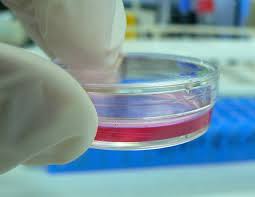Source: news-medical.net
Cartilage degeneration and damage treatment remain a major challenge in today’s society; hence, tissue engineering strategies are being developed to investigate new alternatives based on a combination of cell therapy and 3D scaffolds to support cartilage cells. Such therapies have emerged as a promising new approach to the treatment of cartilage injuries.
An international team of scientists, led by the University of Granada (UGR), has designed a new hydrogel using pioneering “polymer microarrays” technology, which successfully helps to regenerate cartilage.
The researchers evaluated the adhesion capacity and viability of healthy chondrocytes extracted from patients with osteoarthritis of the knee, screening over 380 different polyacrylate and polyurethane polymers. Of these 380 alternatives, they selected the ten polymers that presented the best properties in terms of facilitating the adhesion and viability of this cell type in particular. They also performed further assays to test the ability of these 10 polymers to support chondrocyte proliferation to produce cartilage matrix in long-term cultures.
The polymer poly (methylmethacrylate-co-methacrylic acid) was found to present the best biological and chemical characteristics, and was thus selected to synthesize hydrogels for use as 3D matrices. The analysis and characterization of the ultra-structural morphology, the microstructure, and the mechanical tests of this new hydrogel showed that it possessed the required characteristics to generate a support that mimics the environment that chondrocytes need in the cartilage.
Furthermore, biological characterization of this material showed that it has the capacity to generate the appropriate niche for growth in a number of chondrocytes, while retaining their characteristics in the long-term culture in the laboratory setting. This was demonstrated by the high expression of genes characteristic of chondrogenesis, such asType II collagen,SOX-9, and aggrecan. Not only that, these chondrocytes proliferated by colonizing the entire hydrogel, producing an extracellular matrix rich in proteoglycans, similar to that which they produce in native cartilage.
Subsequent studies on mice verified the tremendous potential of this polyacrylate. First, the implantation of the hydrogel in immunocompetent mice showed that the material is totally biocompatible, presenting no signs of rejection by the organism. Furthermore, mouse cells colonized the hydrogel and secreted extracellular matrix. Second, the implantation of the hydrogel after it had previously been in culture with patients’ chondrocytes for 21 days showed that, when taken from the mice, the chondrocytes continued maintaining their viability, proliferating, and expressing chondrogenesis genes, producing the matrix typical of the aforementioned cartilage.
